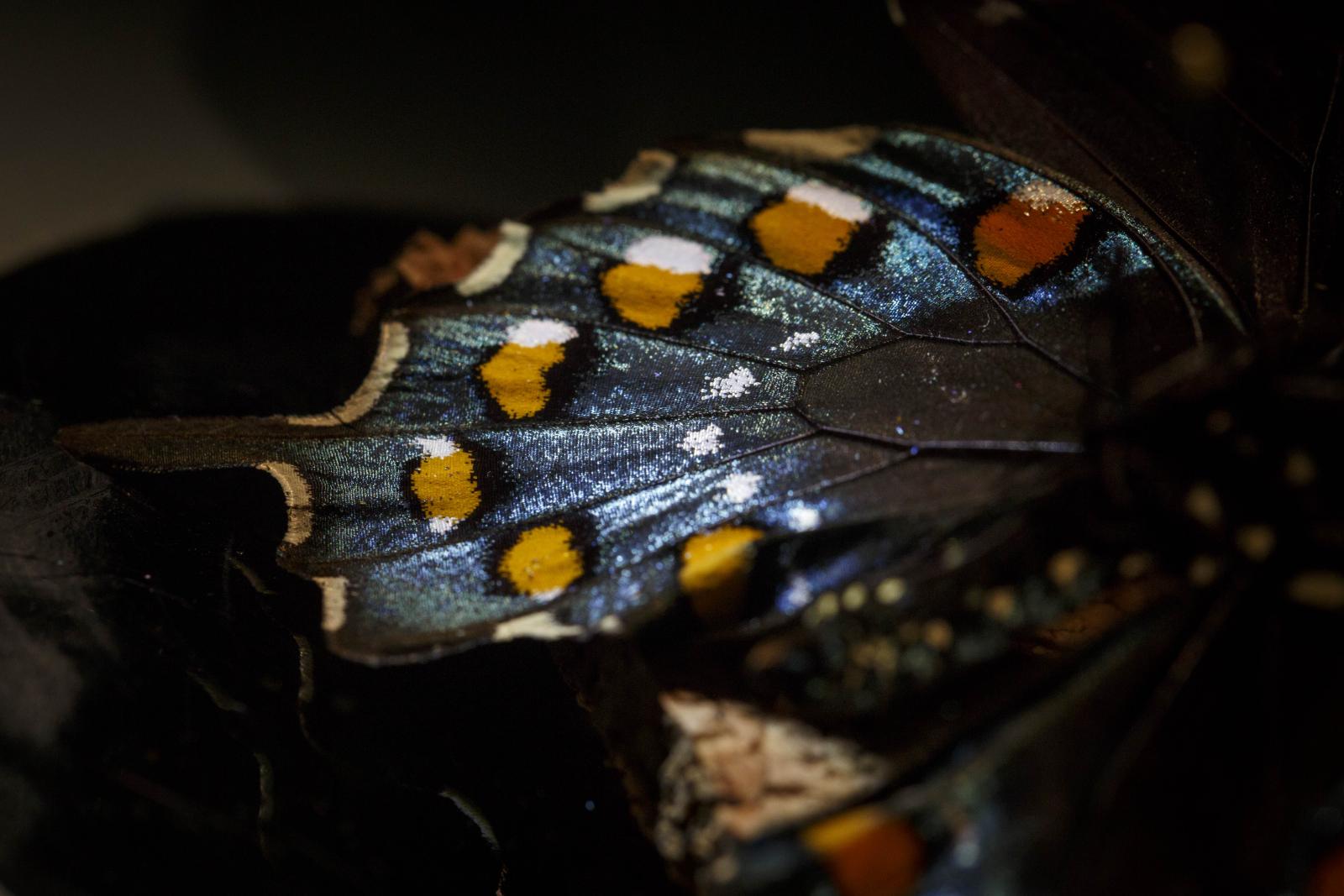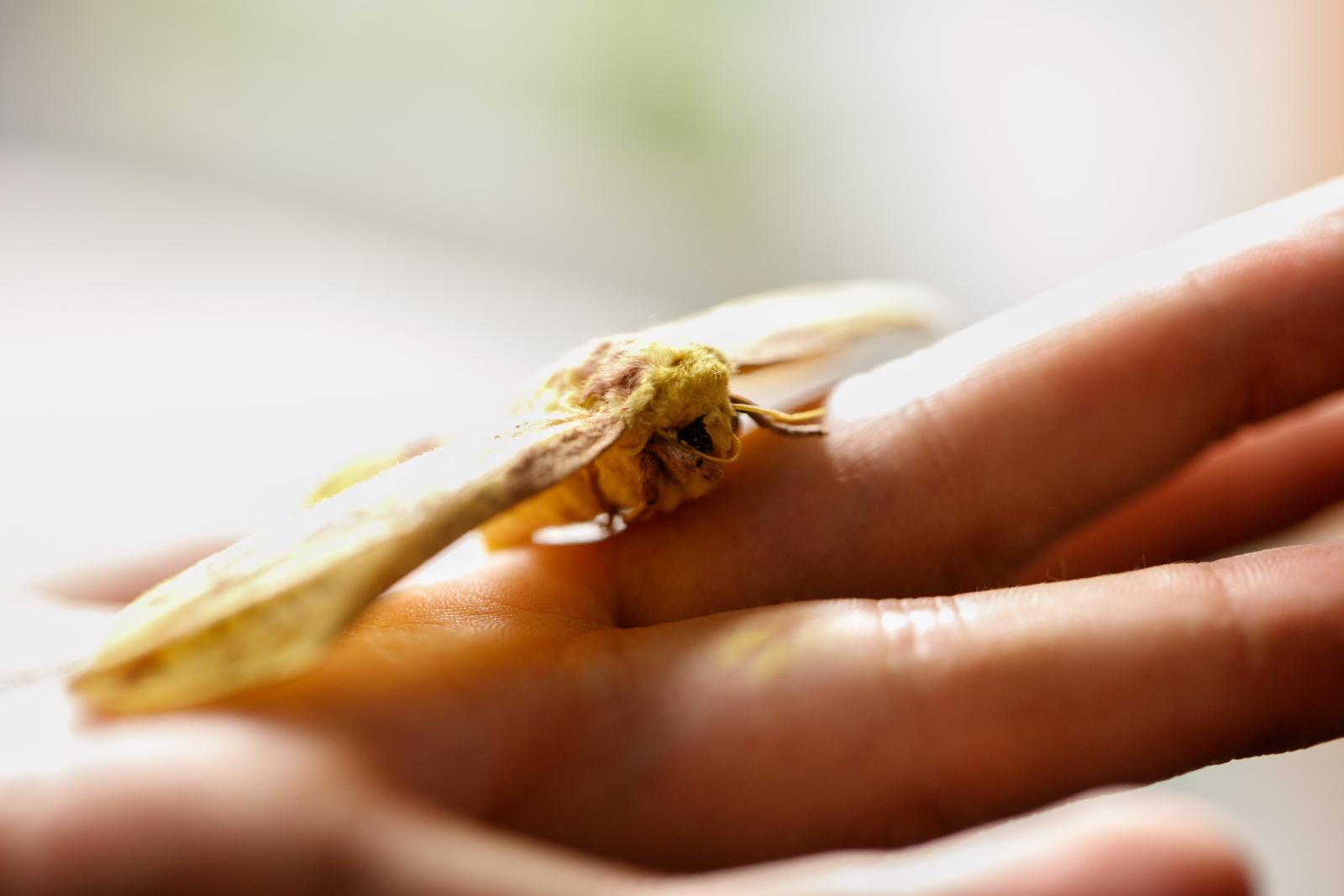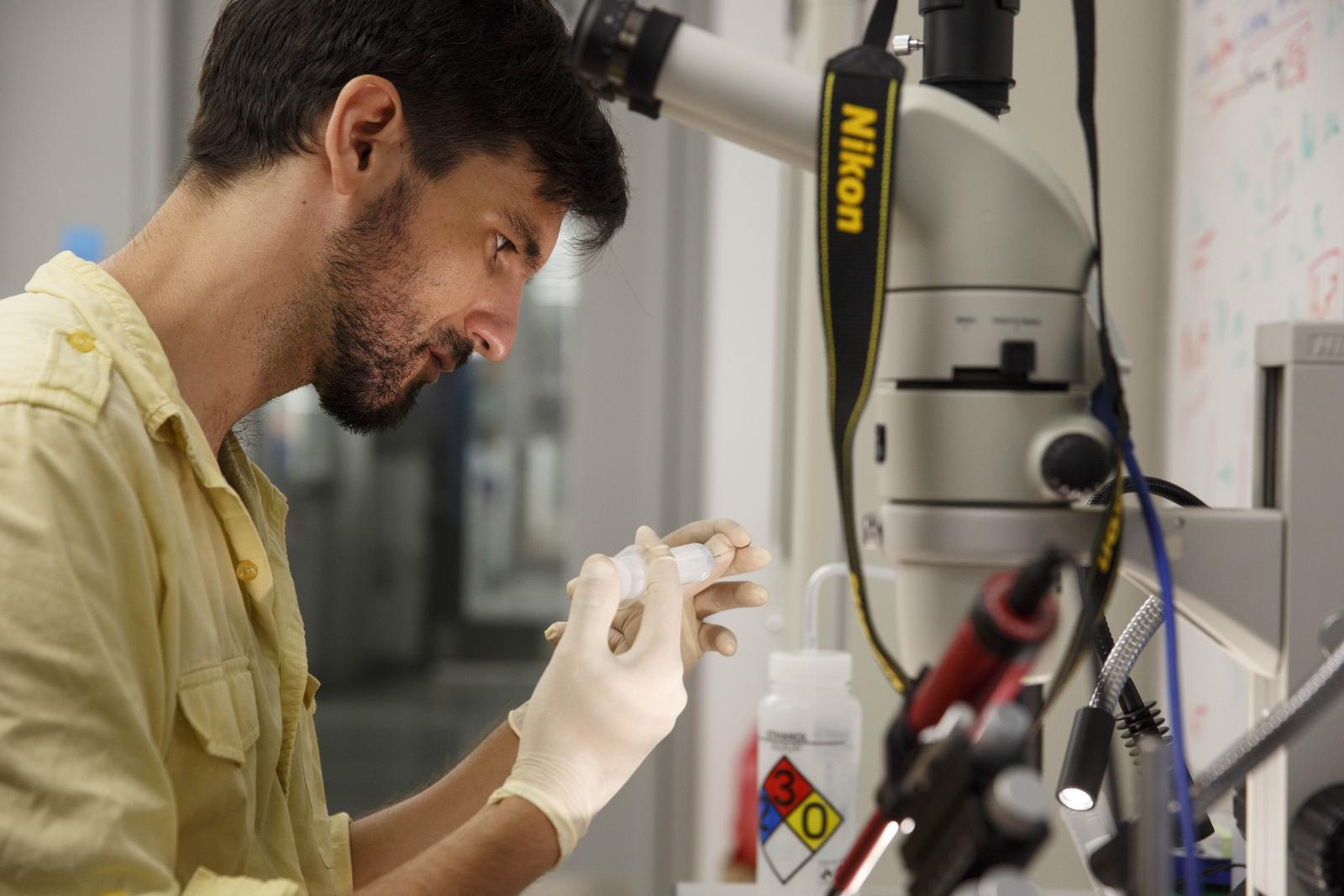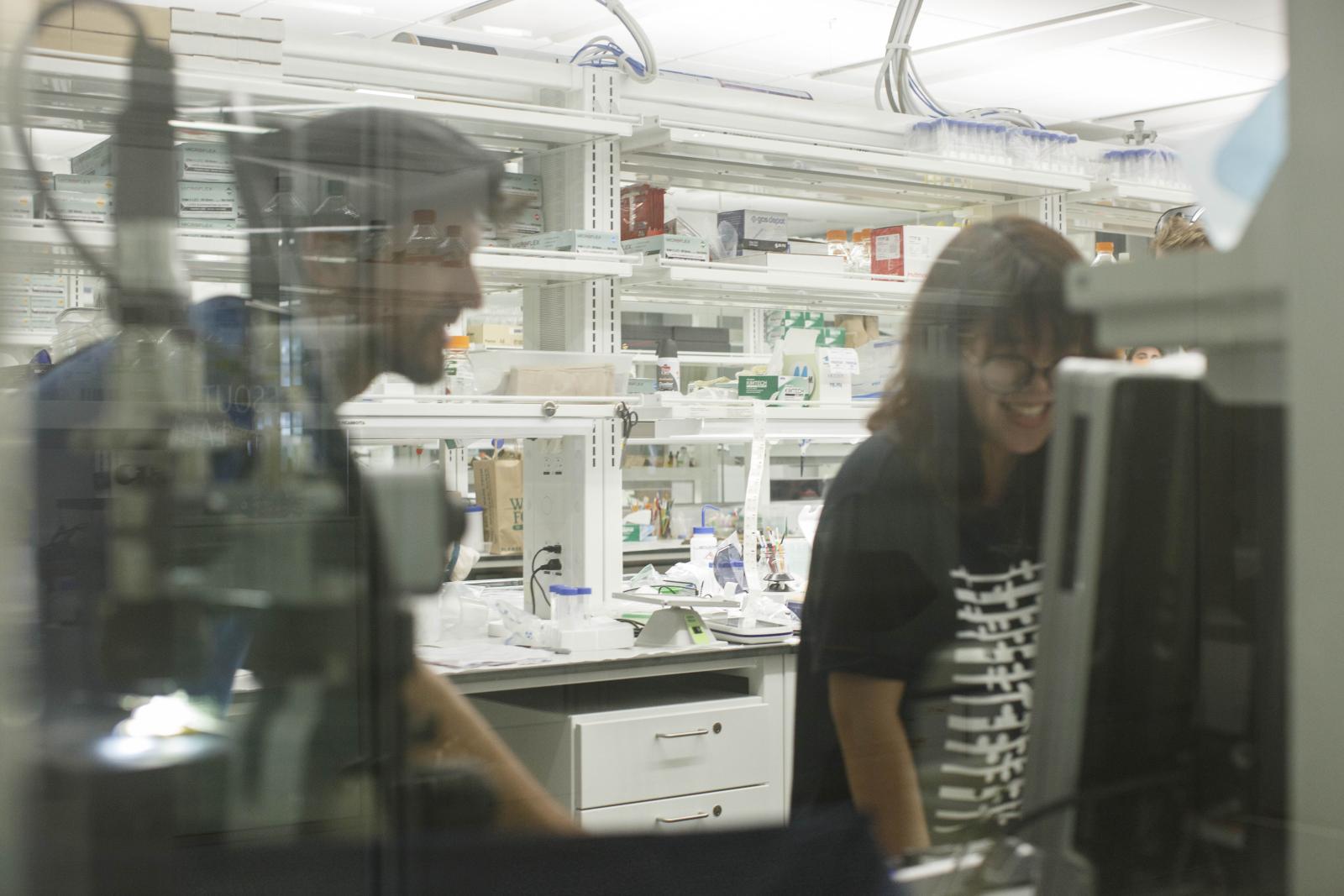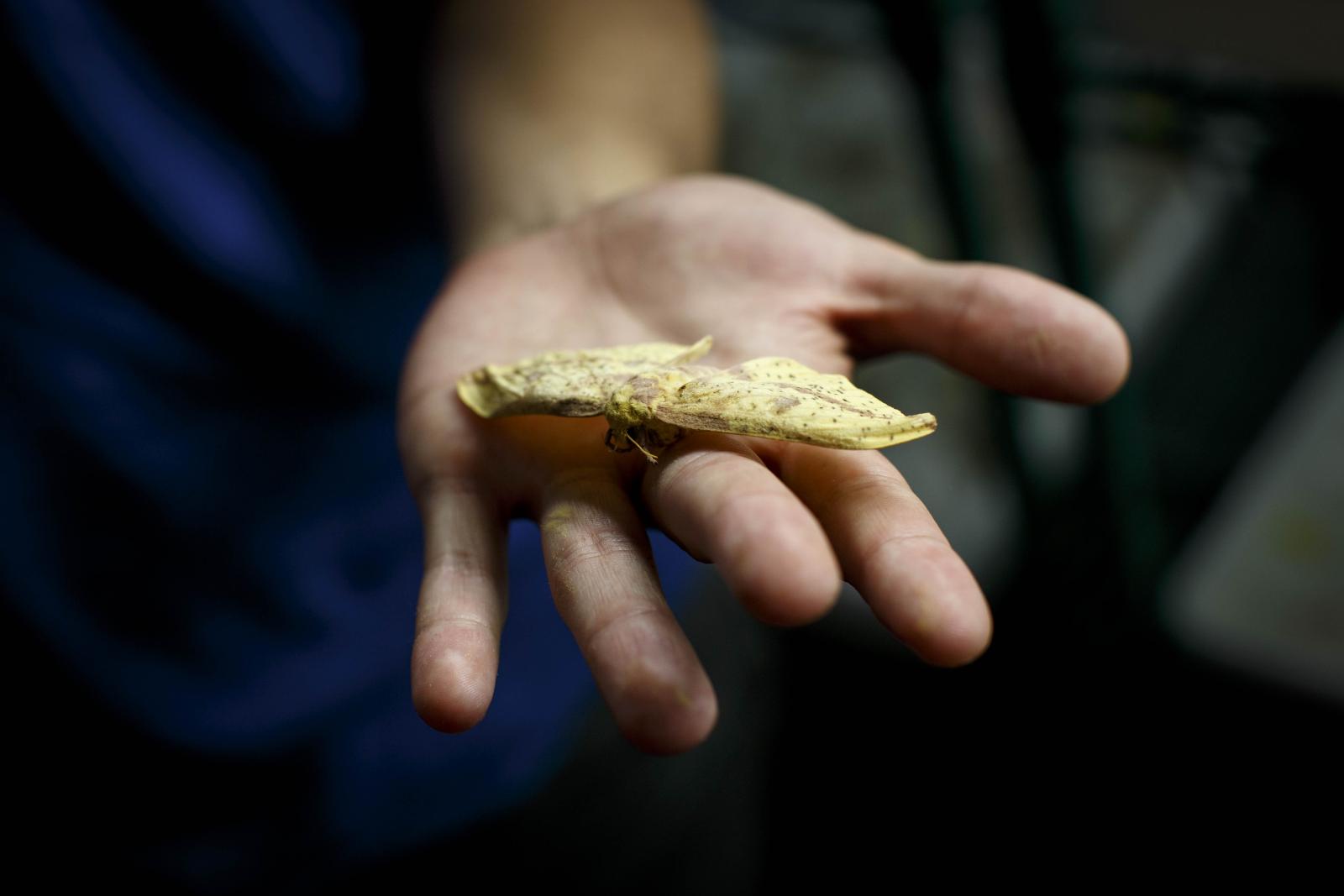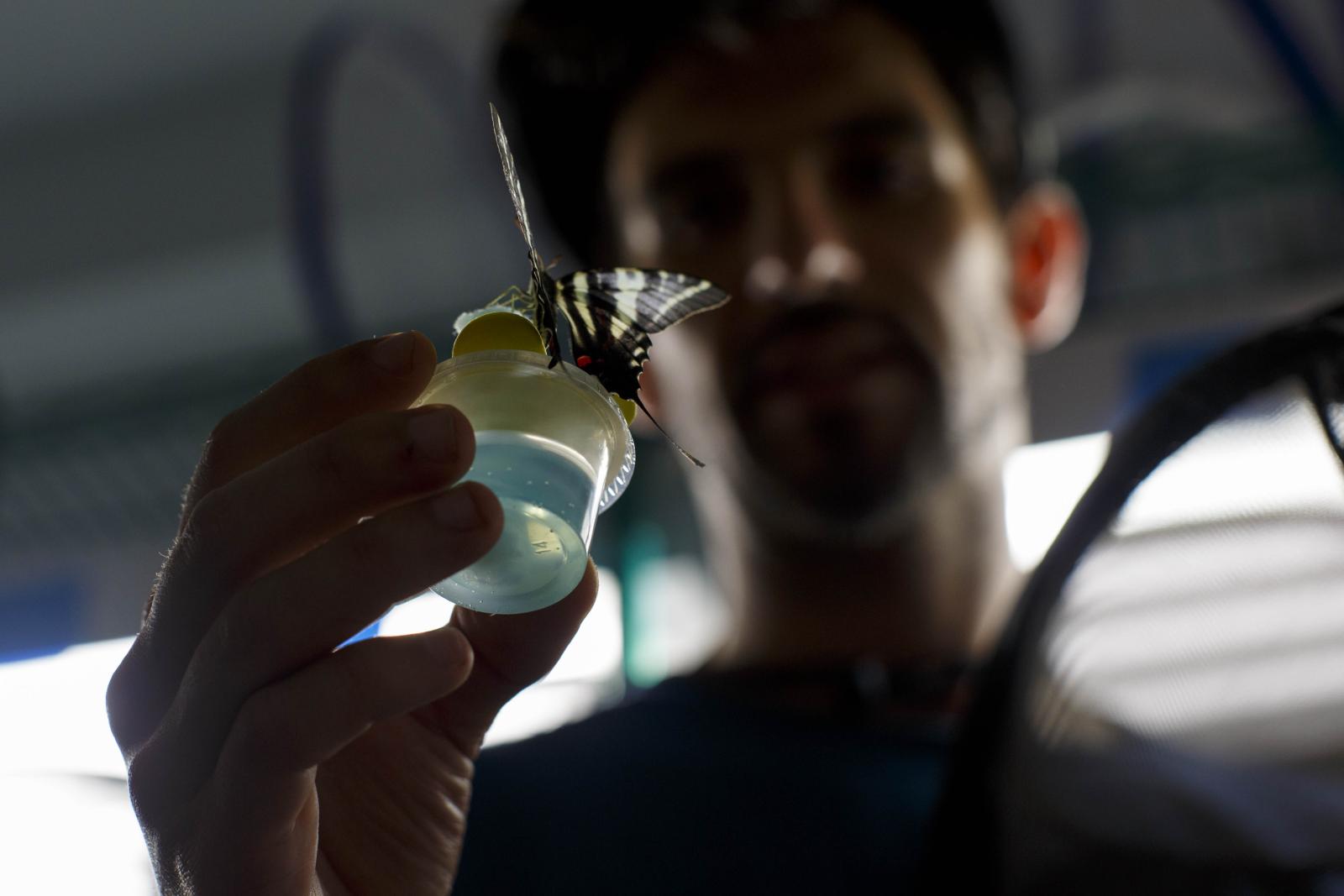By Kristen Mitchell
There are more than 20,000 distinct species of butterflies in the world today, all distinguishable by the colors and patterns on the wing. Unlocking what causes these differences could be the key to understanding biodiversity, said Arnaud Martin, an assistant professor of biology in the Columbian College of Arts and Sciences.
In his Science and Engineering Hall lab, Dr. Martin is using gene editing to study the patterns on butterfly wings. With CRISPR—a technology that can be used to cut DNA at any desired site in the genome— Dr. Martin can modify butterfly genes one by one and determine the function of genes in making shapes and forming colors.
“We know why butterflies have beautiful colored patterns, it’s usually for sexual selection, for finding a mate or it’s some kind of adaptation to protect themselves from predators,” he said. “What is more mysterious is how do they do it, how do you make stripes and dots, how do you make complexity.”
Dr. Martin looks after several colonies of butterflies and maintains them throughout their life cycle. Researchers collect the eggs and use CRISPR gene editing technology to modify the genes one by one to determine their function in making shapes. This process is is akin to taking a pair of scissors to a handful of embryo cells, removing a single gene in the entire genome, Dr. Martin said.
[video:https://vimeo.com/230481946 width:560 height:315 align:center lightbox_title:From DNA to Diversity]
Dr. Martin’s work focuses on butterfly diversity, but this branch of genetic research has massive implications for studying all types of organisms— including humans.
“Our research is very fundamental, and it’s about trying to understand where we come from and how,” he said. “In a way a butterfly wing is just a pattern with boundaries and specialized cells, and we have that in our own anatomy. If you look at the brain...to make very complicated brains you’ve got to make patterns. We don’t know how all these patterns are evolving really well, that’s where butterflies come in.”
In a recent study, Dr. Martin looked at how WntA, identified as a hotspot gene for shaping the wing, could evolve to shape different genetic features in different species. In collaboration with an international team of researchers, he identified WntA as a “painting gene” several years ago in one species of butterfly. Researchers believed the gene was important for laying out the basic pattern organization of the wing, and decided to test this idea by removing the gene in seven butterfly species and seeing what happened.
The results have been fascinating, Dr. Martin said. The wing patterns changed in significant ways with color changes and trademark patterns altered.
“In every single butterfly, the mutants displayed a variety of modifications in distinct regions of the wing,” Dr. Martin said. “Together they make sense, and they tell us something important about genes and evolution. They tell us that a single gene can evolve over and over again to make novelty.”

The left side of this Monarch butterfly show how a typical specimen would look in the wild. The right side shows the effects of CRISPR.
During development a butterfly wing is like a canvas, Dr. Martin said. When a painter begins a new project they will often start with broad sketches to arrange an outline. He believes butterfly wings are designed with a similar process. These broad strokes are modified over time, changing the way genes are expressed and creating new shapes. This is where color pattern biodiversity comes from, he said.
The research process has been full of surprises, Dr. Martin said. CRISPR technology has opened the door for discoveries that would have been impossible just a few years ago.
“Every single experiment has yielded unexpected results, and it’s quite a eureka moment to have a new butterfly coming out of its cocoon and revealing the surprising effects of CRISPR,” he said. “The mutations have had very specific effects. Part of what we got was expected, but not necessarily.”
In the future, Dr. Martin hopes to use CRISPR for genome editing, a more surgical version of genetic modification where scientists can cut and insert DNA.This process would allow the researcher to add patterns to the wing and change its size in a controlled way to test specific hypotheses about genetic mechanisms that create shapes.
“I think the work we’re doing right now is kind of opening a window on new opportunities to study biodiversity and hopefully bring attention to the hidden secrets of these creatures,” Dr. Martin said. “There is a lot of value trying to explain the complexity and the beauty of the universe around us, especially living things. It’s an infinite template of wonder.”
Dr. Martin led the study “Macroevolutionary shifts of WntA function potentiate butterfly wing-pattern diversity,” which published Monday in the journal Proceedings of the National Academy of Sciences.





